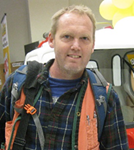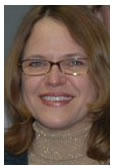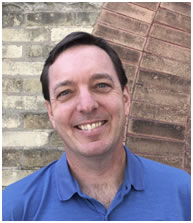Bioavailability of Contaminants in Soil: Considerations for Human Health Risk Assessment
Sponsored by: Interstate Technology and Regulatory Council
"Risk-based cleanup goals are often calculated assuming that chemicals present in soil are absorbed by humans as efficiently as the chemicals dosed during the toxicity tests used to determine regulatory toxicity values (such as the Reference Dose or Cancer Slope Factor). This assumption can result in inaccurate exposure estimates and associated risks for some contaminated sites because the amount of a chemical absorbed (the chemical's bioavailability) from contaminated soil can be a fraction of the total amount present. Properly accounting for soil-chemical interactions on the bioavailability of chemicals from soil can lead to more accurate estimates of exposures to soil contaminants and improve risk assessments by decreasing uncertainty.
The basis for this training course is the ITRC guidance: Bioavailability of Contaminants in Soil: Considerations for Human Health Risk Assessment (BCS-1). This guidance describes the general concepts of the bioavailability of contaminants in soil, reviews the state of the science, and discusses how to incorporate bioavailability into the human health risk assessment process. This guidance addresses lead, arsenic, and polycyclic aromatic hydrocarbons (PAHs) because evaluating bioavailability is better understood for these chemicals than for others, particularly for the incidental ingestion of soil.
The target audience for this guidance and training course are:
- Project managers interested in decreasing uncertainty in the risk assessment which may lead to reduced remedial action costs.
- Risk assessors new to bioavailability or those who want additional confidence and training in the current methods and common practices for using bioavailability assessment to more accurately determine human health risk at a contaminated site.
- Value the ITRC document as a ""go-to"" resource for soil bioavailability
- Apply the decision process to determine when a site-specific bioavailability assessment may be appropriate
- Use the ITRC Review Checklist to develop or review a risk assessment that includes soil bioavailability
- Consider factors that affect arsenic, lead and PAH bioavailability
- Select appropriate methods to evaluate soil bioavailability
- Use tools to develop site-specific soil bioavailability estimates and incorporate them into human health risk assessment
Accessibility, Recording, and Content Disclaimer
Rehabilitation Act Notice for Reasonable Accommodation
It is EPA's policy to make reasonable accommodation to persons with disabilities wishing to participate in the agency's programs and activities, pursuant to the Rehabilitation Act of 1973, 29 U.S.C. 791. Any request for accommodation should be made to at or , preferably one week or more in advance of the webinar, so that EPA will have sufficient time to process the request. EPA would welcome specific recommendations from requestors specifying the nature or type of accommodation needed. Please note that CLU-IN provides both alternate phone call-in options and closed captioning for all webinars, and requests for these specific accommodations are not necessary.
Webinar Recording
By participating in this CLU-IN webinar, you automatically agree to authorize recording of audio and visual content presented during this live event and consent to subsequent use of this recording in the public domain by the U.S. Environmental Protection Agency. This recording may include questions, comments and poll responses provided by you during the live event in addition to your name, voice, image or likeness. This recording will be made available after the conclusion of the live event as part of the CLU-IN webinar archives, and will remain available indefinitely. If you do not wish to consent to the recording, please do not join the live event, and contact Jean Balent at 202-566-0832 or balent.jean@epa.gov to discuss your concerns.
Content Disclaimer
This webinar is intended solely to provide information to the public. The views and opinions expressed as part of this webinar do not necessarily state or reflect those of the U.S. Environmental Protection Agency. It is not intended, nor can it be relied upon, to create any rights enforceable by any party in litigation with the United States, or to endorse the use of products or services provided by specific vendors. With respect to this webinar, neither the United States Government nor any of their employees, makes any warranty, express or implied, including the warranties of merchantability and fitness for a particular purpose, or assumes any legal liability or responsibility for the accuracy, completeness, or usefulness of any information, apparatus, product, or process disclosed, or represents that its use would not infringe privately owned rights.
Presenters:
 Bryn Thomas, Oregon Department of Environmental Quality (thoms.bryn@deq.state.or.us)
Bryn Thomas, Oregon Department of Environmental Quality (thoms.bryn@deq.state.or.us)
Bryn Thoms is a hydrogeologist with Oregon Department of Environmental Quality's (ODEQ's) Cleanup Program in Eugene, Oregon. Since 1998, Bryn has worked in ODEQ's Cleanup Program with prior experience in environmental consulting. Bryn oversees a variety of cleanup projects including solvent groundwater plumes, legacy pesticide sites, former wood products mill sites, petroleum releases, and abandoned mine lands. His work on abandoned mine lands has led him to assisting on cleanup of mercury mines and artisanal gold mines internationally. In 2015, he became active with ITRC in the Bioavailability of Contaminants in Soil Team as a result of overseeing one of the first ODEQ projects that utilized bioavailability adjustments in human health risk assessment. Bryn helped develop the Decision Section of the Bioavailability Guidance document, where his regulatory experience provided valuable perspective on incorporating bioavailability into the regulatory cleanup process. He has led presentations on assessment and cleanup of mercury and arsenic-contaminated sites to several university geochemistry classes, NGOs, and the Peru Ministry of Environment. Bryn earned a bachelor's degree in geology from Oregon State University in Corvallis, Oregon in 1992. He has been an Oregon registered professional geologist since 1997.
 Yvette Lowney, Technical Advisor to SERDP (ylowney@alloy-llc.com)
Yvette Lowney, Technical Advisor to SERDP (ylowney@alloy-llc.com)
Yvette Lowney is Principal and owner of Alloy, LLC. She has been an environmental consultant since the 1980s, and represents SERDP on the ITRC project team. She has served as PI on research programs to assess the bioavailability of metals and organic chemicals from soil, and has extensive experience in applying bioavailability adjustments in human health risk assessments, addressing issues of data collection, bioavailability evaluations, incorporation in risk calculations, and negotiations for regulatory approval. She worked within the California Department of Health Services for several years before entering the consulting community. Yvette joined the ITRC Bioavailability in Contaminated Soils Team in 2015 and is one of the lead authors on the introduction, arsenic, and PAH chapters of the document. Yvette earned a Bachelor's degree in Molecular, Cellular, and Developmental Biology from The University of Colorado, Boulder in 1982, and a Master's degree in Public Health from UC Berkeley in 1986.
 Kevin Long, M.S., Terraphase Engineering Inc (kevin.long@terraphase.com)
Kevin Long, M.S., Terraphase Engineering Inc (kevin.long@terraphase.com)
Kevin Long, M.S. is a Principal Consultant in Terraphase Engineering Inc's Princeton, NJ office. He has more than two decades of experience in applying risk assessment and risk management strategies to support remedial action and closure of sites across the country. His work has included sites that have required the evaluation of unique exposure scenarios or exposure to complex and emerging chemicals, including PFAS. He has been a member of ITRC since 2011 and has supported the development of technical guidance and training regarding site risk assessment, bioavailability of contaminants in soil, and PFAS. Kevin earned BS and MS degrees, both in Civil and Environmental Engineering, from Princeton University in Princeton, NJ.
 Valerie Hanley, California Department of Toxic Substances Control (valerie.hanley@dtsc.ca.gov)
Valerie Hanley, California Department of Toxic Substances Control (valerie.hanley@dtsc.ca.gov)
Dr. Valerie Hanley is a Staff Toxicologist in the Human and Ecological Risk Office at the California Department of Toxic Substances Control (DTSC) in Sacramento, CA. Valerie has been with DTSC since 2008. She recently authored a Human Health Risk Assessment Note on how to evaluate Arsenic contaminated sites with a specific emphasis on how and when to use bioavailability in those site evaluations. Valerie has been involved in the study of arsenic bioavailability since 2009 when DTSC was awarded funding from US EPA to evaluate and develop new methods to determine arsenic bioavailability in mining soils. Through this work Valerie helped develop the California Arsenic Bioaccessibility (CAB) Method, which is now recommended for use in sites throughout California. Valerie joined the ITRC Bioavailability in Contaminated Soils Team in 2015 and is one of the lead authors on the arsenic chapter of the document. In addition to her work on arsenic, Valerie evaluates Human Health Risk Assessments for a variety of sites and is involved in DTSC's Safer Consumer Products program. Valerie earned a Bachelor's degree in Molecular, Cellular, and Developmental Biology from The University of California (UC) Santa Cruz in 2001 and her PhD in Comparative Pathology from UC Davis in 2007. She completed a postdoctoral fellowship at UC Davis in Respiratory Toxicology in 2008.
 Barrie Selcoe, Jacobs (barrie.selcoe@jacobs.com)
Barrie Selcoe, Jacobs (barrie.selcoe@jacobs.com)
Toxicology and Risk Assessment
Barrie Selcoe is a Principal Technologist with Jacobs in Houston, Texas. Barrie has worked at Jacobs since 2018, specializing in human health risk assessment. She is responsible for planning and overseeing human health risk-based activities at hazardous waste sites across the U.S. and internationally. She utilizes numerous federal (USEPA and Department of Defense) and state guidance documents in risk assessment projects, and is involved in all stages of site planning, investigation and reporting, cleanup level identification, and remedial action planning. She has been involved in risk assessments in 40 states and about 20 countries. She has worked on risk assessments incorporating incremental sampling and site-specific bioaccessibility studies. She has provided risk assessment services for numerous Comprehensive Environmental Response, Compensation, and Liability Act (CERCLA)/Superfund sites, Resource Conservation and Recovery Act (RCRA) facilities, state-program sites, voluntary actions, and international projects. She has prepared risk assessments for various types of sites, including industrial and commercial facilities, industrial and municipal landfills, bulk fuel terminals, rivers, U.S. Department of Defense facilities, and residential areas. Prior to Jacobs (which purchased CH2M in 2018), she worked as a human health risk assessor for 19 years with CH2M, 7 years with Philip Environmental, and 3 years with O'Brien & Gere Engineers. Since 2012, Barrie has contributed as a team member on ITRC's Risk Assessment team, Bioavailability in Contaminated Soil team, TPH Risk Evaluation at Petroleum-Contaminated Sites team, and PFAS team. She earned a bachelor's degree in microbiology from San Diego State University in San Diego, California in 1986, and a Master's of Public Health from the University of Pittsburgh Graduate School of Public Health in Pittsburgh, Pennsylvania in 1999.
 Anita Meyer, US Army Corps (anita.k.meyer@usace.army.mil)
Anita Meyer, US Army Corps (anita.k.meyer@usace.army.mil)
Anita Meyer is a risk assessor and toxicologist with the Army Corps of Engineers Environmental and Munitions Center of Expertise. She works for the Huntsville Center and is located in Omaha, Nebraska. Since 1997 Anita has gained experience with CERCLA and RCRA risk assessments on formerly used defense sites, military munitions response program sites, former Manhattan Project sites, Army and Air Force active sites and on EPA Superfund projects. Beginning in 2009, Anita has supported the Department of Defense (DoD) Chemical and Material Risk Management Program Directorate, leading DoD interagency reviews of EPA toxicological assessments, as well as regulatory risk assessments for TSCA. Anita represents the Army and the Corps of Engineers on interagency committees and workgroups related to environmental investigation and cleanup. She has been a member of four ITRC technical teams, Bioavailability in Contaminated Soils, Incremental Sampling Methodology, Risk Assessment, and Risk Assessment Resources. She provides risk assessment expertise on Corps of Engineers projects and has utilized bioavailability assessments on former skeet target ranges. Anita also consults on DoD and Army policy, writes Corps of Engineers guidance, and teaches Corps of Engineers courses on risk assessment and in systematic planning. Prior to joining the Corps of Engineers Anita performed cancer and drug development research. Anita earned a bachelor's degree in biological sciences in 1984 and a master's degree in cell biology and genetics in1987 from the University of Nebraska in Lincoln, Nebraska. She is certified by the American Board of Toxicology (DABT).
 Shanna Alexander, EarthCon Consultant (salexander@earthcon.com)
Shanna Alexander, EarthCon Consultant (salexander@earthcon.com)
Shanna Alexander is a board-certified Senior Toxicologist at EarthCon Consultant (EarthCon) in Atlanta, Georgia, specializing in vapor intrusion risk analysis, human health and ecological risk assessment. She is responsible for preparing human and ecological risk assessment reports for clients in support of risk-based site closures at a variety of sites. Since 2003, she has worked collaboratively with federal, state, and local health and regulatory agencies to address concerns related to human and ecological exposures to environmental contaminants. She has worked on risk assessments incorporating geospatial analysis and site-specific bioavailability. Prior to EarthCon, she worked as the Risk Assessment Program Manager and toxicologist for the Georgia Environmental Protection Division (GA EPD) for 13 years and an environmental risk assessor for Golder and Associates for 2 years. During her time at GA EPD, she helped evaluate and oversee the application of state and federal rules and guidance to assess, document, defend, and make health risk determinations in accordance with Comprehensive Environmental Response, Compensation, and Liability Act (CERCLA), Resource Conservation and Recovery Act (RCRA), Georgia VRP Act, Georgia Rules for Hazardous Site Response, Georgia Hazardous Waste Management Act, and the Georgia Brownfield Act. Shanna has contributed to ITRC as a team member for the Risk Assessment, TPH Risk, and Geostatistics for Remediation Optimization teams. She earned a bachelor's degree in Molecular Biology and Chemistry from the University of Nebraska in 2002 and Master's degrees in Toxicology and Public Health from Louisiana State University in Baton Rouge, Louisiana in 2003 and Emory University in Atlanta, Georgia in 2006.
 Geoff Siemering, University of Wisconsin (geoff.siemering@wisc.edu)
Geoff Siemering, University of Wisconsin (geoff.siemering@wisc.edu)
Geoffrey Siemering is a researcher with the Department of Soil Science at University of Wisconsin in Madison. Beginning his work with UW-Madison in 2014, Geoff conducts research and develops outreach programming on soil contaminant issues at the interface of public health and environmental regulation. Recent projects include bioavailability of lead in urban soils, reuse of lead and zinc mine-scarred agricultural land, quantification of cheesemaking and vegetable processing facility wastewater soil denitrification, and determination of anthropogenic polycyclic aromatic hydrocarbon baseline values for urban Wisconsin. He also has experience with triad-approach monitoring of aquatic herbicide impacts, and radionuclide waste disposal. Prior to UW-Madison, Geoff worked for the San Francisco Estuary Institute and Lawrence Livermore National Laboratory. Since 2015, Geoff has contributed to ITRC's Bioavailability of Contaminants in Soil. Geoff earned a bachelor's degree in geochemistry from Pomona College, Claremont, California in 1994 and a master's degree in soil science from the University of California, Berkeley in 1999.
Moderator:
Nicole Henderson, ITRC Contractor (nicole.henderson@hmenviro.com)
Webinar Slides and References:
Webinar Slides and References:
Additional Resources:
- ITRC Bioavailability of Contaminants in Soil: Considerations for Human Health Risk Assessment (BCS-1, 2017)
- ITRC Training Handout for Bioavailability of Contaminants in Soil: Considerations for Human Health Risk Assessment, Excerpts from ITRC BCS-1
- ITRC Bioavailability of Contaminants in Soil team page
- ITRC Decision Making at Contaminated Sites: Issues and Options in Human Health Risk Assessment
- ITRC Incremental Sampling Methodology Update
- ITRC Incorporating Bioavailability Considerations into the Evaluation of Contaminated Sediment Sites (CS-1) Feb-11
Thank you for participating in our webinar. We would like to receive any feedback you might have that would make this service more valuable.
Help & FAQs
Zoom Resources
This seminar will be delivered through Zoom. Participants are encouraged to update to the latest version of the Zoom application for the best experience. If you are unable to install the Zoom application, most functions will be available if you join just using a modern web browser such as Chrome, Edge or Firefox. We strongly encourage you to run the Zoom Meeting Test prior to attending this seminar. Technical support on the day of the seminar will be very limited and subject to significant delays.
Rehabilitation Act Notice for Reasonable Accommodation
It is EPA's policy to make reasonable accommodation to persons with disabilities wishing to participate in the agency's programs and activities, pursuant to the Rehabilitation Act of 1973, 29 U.S.C. 791. Any request for accommodation should be made to at or , preferably one week or more in advance of the seminar, so that EPA will have sufficient time to process the request. EPA would welcome specific recommendations from requestors specifying the nature or type of accommodation needed, such as closed captioning.
with any additional questions
If you have a suggested topic or idea for a future CLU-IN internet seminar, please contact:
Technology Integration and Information Branch
PH: 202-566-0832 | Email: balent.jean@epa.gov
Technology Integration and Information Branch
PH: 202-566-0875 | Email: adam.michael@epa.gov




